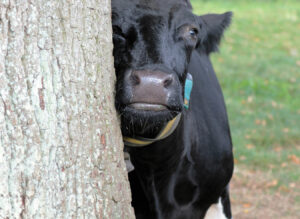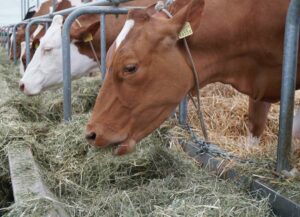Nuria Garcia
The presence of antibiotics in the environment, even at very low concentrations, can contribute to the emergence of antibiotic resistance genes (ARG) and the selection of antibiotic-resistant bacteria.
Up to 90% of antibiotics given to animals are excreted through feces and urine, so manure generated in animal production represents a route of antibiotic elimination to the environment.
In addition, the application of untreated manure can increase the resistance genes present in agricultural soils, that could be transferred to people and animals through drinking water and the food chain, and which may lead to a decrease in the effectiveness of antibiotic therapies.
As a result, it is vitally important to develop cost-effective methods of antibiotic degradation in manure prior to application, to mitigate the appearance of antibiotic resistance.
The composting and anaerobic digestion of manure could effectively increase the degradation of antibiotics and reduce the prevalence of ARG. However, these processes have high costs and technical requirements that limit their implementation on many farms.
The physicochemical factors involved in the process (temperature, pH, CO2 and O2 concentrations) explain the effect of composting and anaerobic digestion on the persistence of antibiotics and ARG.
An article was published in the Journal of Dairy Science (Meng et al., 2020), that addressed the effects of temperature and pH on the persistence of antibiotics and ARG on manure. This research assessed the effects of various temperatures and pH changes on the persistence on dairy slurry of an antibiotic of the cephalosporin group and ARGs.
The study was conducted at the Virginia Tech Dairy Center, where five cows of similar weights were treated at the end of the lactation period with a single dose of 300 mg of Cephapirin Benzathine in each quarter through the teat, following standard drying protocols (treatment with antibiotics specific for drying 60 days before delivery).
Urine and feces samples were collected from day 1 (day of administration of the antibiotic) through day 3 after treatment, and feces and urine samples from each cow during the three days were blended to obtain a homogeneous manure sample.
Approximately 1 kg of this manure was mixed with sterile water to generate a puree with 5% final solids. This was incubated in flasks from 400 ml to 10, 35 and 55°C, or at 25 °C with initial pH adjustments to 5, 7, 9 or 12. Samples were collected on days 0, 1, 3, 7, and 28 and stored at -20 °C.
Cephapirin and ARG concentrations were then quantified. For the latter, DNA was extracted, and a PCR was performed to quantify the resistance genes to β-lactams (cfxA), to macrolides (mefA) and tetracyclines [tet(W)].
Presence of antibiotics in the slurry
The results showed that the antibiotic was present in the slurry of the initial samples (day 0) and 1 day after initiating the incubation treatment or initial pH adjustment but was not detected thereafter.
Thus, the concentration of Cephapirin decreased rapidly during the first day (from 12.5 ng/g on day 0 to less than 1 ng/g on day 1), regardless of the temperature or pH treatments applied. However:
- Degradation was higher on day 1 in environments at 35 and 55 °C compared to the environment at 10 °C.
- The concentrations of Cephapirin were lower on day 1 in the alkaline environment (pH 9 and 12) compared to the neutral or acidic environments (pH 7 or 5).
These results are consistent with the findings of other studies and suggest that Cephapirin has little stability in manure.
Temperature and pH effects on antibiotic resistant genes
Although none of the cows in the study received any antibiotic treatment at least 280 days prior to the administration of Cephapirin, the three quantified ARG were detected: cfxA, mefA and tet(W) in the manure puree. These ARGs were likely to reach cows from other areas of the farm or even from other cows in the herd, a mode of transmission that would require further analysis.
No significant effects of initial temperature or pH were observed in the presence of ARG to β-lactam, cfxA, and ARG to the tetracycline tet(W), which shows that purine bacteria that encoded these genes were not sensitive to temperature or pH.
At 10 and 55 °C however, the amount of ARG is reduced to macrolides mefA, indicating that the growth rate of bacteria with the mefA gene is inhibited at these temperatures. The same thing happened after exposure to an alkaline environment (pH 12), possibly because the change in pH produced a change in the structure of the bacterial community and, as a result its population was reduced.
Conclusions
These results suggest that the increase in temperature or pH during the storage of slurry from dairy cows could be used together with other farming practices, to reduce the transfer of ARG to the environment through manure application.
Reference
Li MM, Ray P, Teets C, Pruden A, Xia K, Knowlton KF. 2020. Short communication: Increasing temperature and pH can facilitate reductions of cephapirin and antibiotic resistance genes in dairy manure slurries. J. Dairy Sci. 103:2877–2882.
© 2021 Dellait Dairy Research Review. All Rights Reserved.











